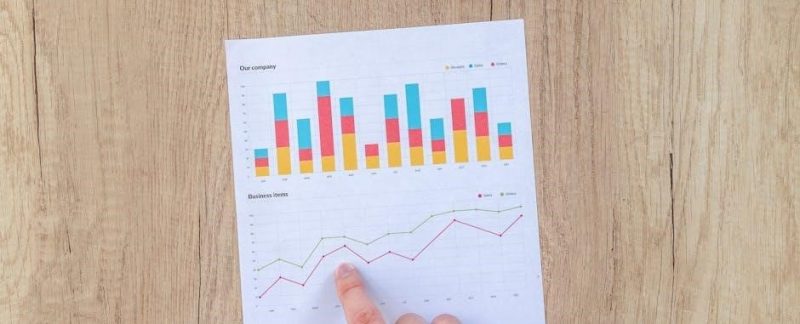Statistics worksheets are educational tools designed to help students practice and understand statistical concepts․ They often include exercises on data analysis, probability, and measures of central tendency․
These worksheets typically provide problems with answers, making them ideal for self-study or classroom use․ Many resources offer free PDF downloads, catering to various skill levels․
What are Statistics Worksheets?
Statistics worksheets are structured resources designed to teach and reinforce statistical concepts through practical exercises․ They cover topics like data analysis, probability, and measures of central tendency․
These worksheets often include problems with answers, making them ideal for self-study or classroom activities․ Many are available as free PDF downloads, offering flexibility for educators and students alike․ They cater to various skill levels, providing a comprehensive way to learn and apply statistical methods effectively․

Descriptive vs․ Inferential Statistics
Descriptive statistics involves summarizing data to understand its basic features․ Inferential statistics uses sample data to make inferences about a larger population, helping draw broader conclusions․
Differentiating Between the Two
Descriptive statistics focuses on summarizing and describing datasets through measures like mean, median, and mode․ It provides a clear overview of the data at hand․ Inferential statistics, however, goes further by using samples to make predictions or generalizations about a population․ Unlike descriptive statistics, it involves probability and is used to draw conclusions beyond the immediate data․ This distinction is crucial as it defines how data is analyzed and interpreted in various contexts․

Measures of Central Tendency
Measures of central tendency summarize data through mean, median, and mode․ These calculations provide insights into data distribution, helping identify typical values and trends effectively․
Mean
The mean is the average of all numbers in a dataset, calculated by summing the values and dividing by the number of values․ It provides a central value, representing the dataset’s typical score․ For example, if test scores are 85, 78, 92, and 88, the mean is (85+78+92+88)/4 = 85․75․ The mean is influenced by all data points, making it sensitive to extreme values․ Worksheets often include exercises to calculate the mean, ensuring students understand its application in data analysis and interpretation․ The mean is a fundamental concept in statistics, widely used in various fields․
Median
The median is the middle value in an ordered dataset, separating the higher half from the lower half․ To find it, arrange the numbers in order and identify the central value․ For example, in the dataset 78, 85, 88, 92, the median is 88․ If the dataset has an even number of values, the median is the average of the two middle numbers․ Worksheets often provide exercises to calculate the median, highlighting its use in balancing data distribution․ The median is less affected by outliers compared to the mean, making it a robust measure of central tendency․
Mode and Range
The mode is the number that appears most frequently in a dataset, while the range is the difference between the highest and lowest values․ For example, in the dataset 1, 2, 3, 4, 4, the mode is 4, and the range is 4-1=3․ Worksheets often include exercises to identify these measures, helping students understand their roles in data analysis․ The mode identifies patterns, and the range measures data spread, both essential for interpreting datasets effectively․ These concepts are fundamental in descriptive statistics, aiding in summarizing and understanding data distributions․

Organizing Data for Analysis
Organizing data involves collecting, categorizing, and structuring information to facilitate analysis․ Techniques include creating frequency tables, charts, and graphs to present data clearly and systematically․

Collecting and Organizing Data
Collecting and organizing data are foundational steps in statistical analysis․ Worksheets often include exercises where students gather data through surveys or experiments․ Data can be organized using tables, charts, or graphs to make it easier to analyze․ Free PDF resources provide structured exercises, such as creating frequency tables or interpreting bar charts․ These activities help students understand how to categorize and present data effectively․ Organized data is essential for applying statistical methods like calculating measures of central tendency or probability․

Basics of Probability
Probability introduces concepts like likelihood of events and chance․ Worksheets offer exercises on calculating probabilities, understanding independent/dependent events, and applying basic rules․ They help build foundational skills in statistics through practical problems and answers․
Probability is a fundamental concept in statistics, focusing on the likelihood of events occurring․ Worksheets introduce basic probability principles, such as calculating probabilities, understanding independent and dependent events, and applying probability rules․ They include practical exercises for students to practice probability calculations, ensuring a solid grasp of the basics․ Answer keys are often provided, allowing for self-assessment and improved understanding․ These resources are designed to be interactive and accessible, making complex concepts easier to comprehend․
Finding the Median
Finding the median involves ordering data and identifying the middle value․ For odd-numbered datasets, it’s the central number․ For even-numbered, it’s the average of two middle values․
Steps to Calculate the Median
To calculate the median, follow these steps:
- Arrange the data in ascending or descending order․
- Determine if the number of values is odd or even․
- If odd, the median is the middle value․ If even, average the two middle values․
This method ensures accuracy and simplifies understanding for students practicing with worksheets․

Calculating Mean, Mode, and Range
Calculate the mean by averaging numbers, mode as the most frequent, and range by subtracting the smallest from the largest value․ Worksheets provide practical exercises with answers, aiding students in mastering these concepts effectively․
Practical Exercises
Practical exercises in statistics worksheets provide hands-on experience with calculating mean, median, mode, and range․
These exercises often include real-world data sets, such as test scores or survey results, allowing students to apply concepts learned in class․
Worksheets typically present problems with space for calculations and include answers for self-assessment․
For example, students might find the mean of exam results or determine the mode of a dataset․
These exercises help reinforce understanding and prepare students for more complex statistical analysis․
Answer keys are usually provided, enabling learners to verify their work and identify areas for improvement․
Such resources are invaluable for both classroom use and independent study․
Interpreting Bar Charts
Interpreting bar charts involves analyzing categorical data to determine frequencies or modes․ Statistics worksheets often include exercises to identify the modal grade from bar chart data․

Determining Modal Grade
Determining the modal grade from a bar chart involves identifying the category with the highest frequency․ Bar charts display data distribution, allowing easy visualization of modes․
Students can practice this skill using statistics worksheets, which often include bar charts with test scores or grades․
By locating the tallest bar and reading its label, learners can pinpoint the modal grade effectively․
Worksheets typically provide answers for verification, ensuring understanding and accuracy in interpreting data․ This exercise enhances data analysis skills and prepares students for more complex statistical concepts․

Sources for Free Statistics Worksheets
Free statistics worksheets with answers are available on websites like Math-Aids․Com and Success Tutoring․ These sites offer downloadable PDFs for easy access and printing․
Websites Offering PDFs
Several websites provide free statistics worksheets with answers in PDF format․ Math-Aids․Com and Success Tutoring are popular choices, offering flexible and interactive resources․
These PDFs cover topics like measures of central tendency, probability, and data analysis․ They are easy to download and print, making them ideal for classroom or homework use․
Many worksheets include answers, allowing students to self-check their work․ These resources are valuable for educators seeking structured lessons and for students needing extra practice․
They cater to various skill levels, ensuring comprehensive learning support․

Using Worksheets for Homework
Statistics worksheets with answers are ideal for homework, offering structured practice and immediate feedback․ They help students reinforce concepts like mean, median, and mode at home․
Benefits for Students and Educators
Statistics worksheets with answers provide numerous benefits for both students and educators․ For students, they offer a structured way to practice concepts like mean, median, and mode, ensuring a solid understanding of statistical basics․ The inclusion of answers allows for self-assessment, helping students identify areas needing improvement․ Educators benefit as these worksheets serve as ready-to-use resources, saving time and effort in lesson planning․ They also facilitate personalized learning, enabling teachers to cater to diverse student needs effectively․ Additionally, the availability of PDF formats makes distribution and access convenient, promoting a seamless learning experience for all․
